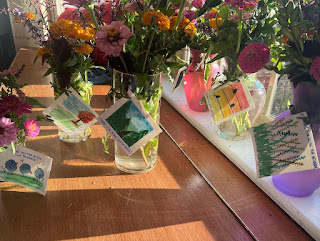Building a Stronger Community with a City Membership Campaign (Part 2)
A city thrives when its residents feel a sense of belonging and purpose within their communities. The City Membership Campaign (developed by Pete Davis and Sam Pressler) seeks to deepen civic engagement by creating spaces for connection, fostering leadership, and ensuring that every resident has a role in shaping their city’s future.
This is part two of what I have learned from reading their posts and materials.
After establishing foundational efforts—such as a Membership Director, a civic census, and accessible meeting spaces—cities can take further steps to strengthen local engagement.
Strengthening Neighborhood Involvement
To expand the impact of the City Membership Campaign, cities must focus on empowering neighborhoods to take charge of their own growth and development. While neighborhoods already serve as gathering places, they need resources, leadership, and structure to truly thrive as civic hubs. Three ways to do this include:
Hosting Neighborhood Engagement Events – Organizing neighborhood meetings, workshops, and cultural events can bring residents together and create opportunities for collaboration. Activities such as neighborhood clean-ups, safety walks, or shared meals help build stronger local bonds.
Enhancing Communication Between Residents and Local Government – Establishing neighborhood advisory boards or liaisons can bridge the gap between city leaders and residents. These roles ensure that neighborhoods have a voice in decisions that affect them, such as infrastructure improvements or new public programs.
Providing Training for Community Leaders – Cities can offer leadership development programs to train block captains, neighborhood representatives, and local advocates. These leaders can then organize events, mediate conflicts, and encourage civic participation among their neighbors.
Three Additional Steps to Expand the Campaign
To take city membership to the next level, local governments can implement these three additional steps:
Create a Citywide Volunteer Network – A centralized volunteer hub would connect residents with local projects, nonprofit organizations, and government initiatives. This could be an online platform listing volunteer opportunities in areas such as public safety, environmental efforts, and social services.
Launch a Newcomer Welcome Program – Moving to a new city can be isolating. A welcoming committee, orientation events, and personalized welcome kits can help new residents integrate into civic life. These resources should provide introductions to local groups, businesses, and government services.
Host Annual Civic Summits – A citywide summit can gather neighborhood leaders, government officials, and community members to discuss ideas, celebrate civic achievements, and set new goals for improving local life. These events encourage collaboration and inspire long-term civic participation.
The Future of City Membership
By expanding on the foundation of civic membership, cities can create lasting change in how residents interact with their communities. From engaging neighborhoods to building strong leadership pipelines and ensuring that every voice matters, the City Membership Campaign can turn passive residents into active community members. When cities prioritize participation, they strengthen democracy, improve quality of life, and foster a spirit of cooperation that benefits everyone.
See City Membership blog post #2 online.
See City Membership blog post #3 online
MORE INFORMATION
Take the Engaged Neighbor pledge and become part of a movement! The pledge outlines five categories and 20 principles to guide you toward becoming an engaged neighbor. Sign the pledge at https://nomoregoodneighbors.com. Individuals who take the pledge do get special invitations to future events online and in person. Contact the blog author, David L. Burton via email at dburton541@yahoo.com or visit his website at http://engagedneighbor.com.





Comments
Post a Comment